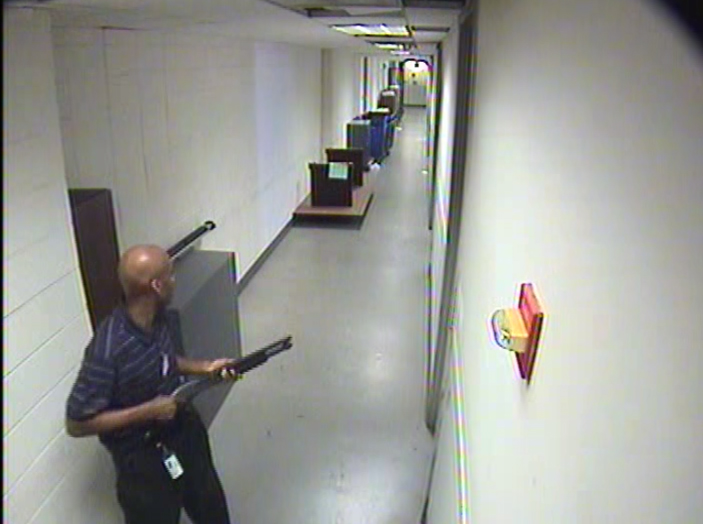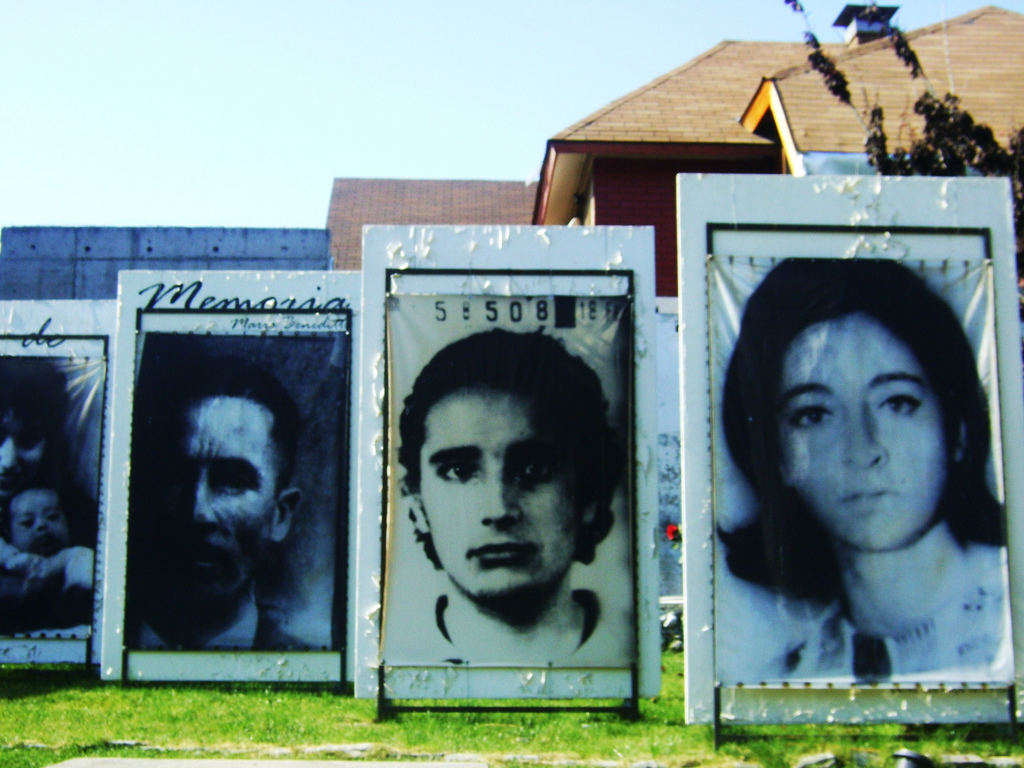|
Juicio A Las Juntas
The Trial of the Juntas () was the judicial trial of the members of the ''de facto'' military government that ruled Argentina during the dictatorship of the ''Proceso de Reorganización Nacional'' (''el Proceso''), which lasted from 1976 to 1983. It is so far the only example of such a large scale procedure by a democratic government against a former dictatorial government of the same country in Latin America. The Trial of the Juntas began on 22 April 1985, during the presidential administration of Raúl Alfonsín, the first elected government after the restoration of democracy in 1983. The main prosecutors were Julio César Strassera and his assistant Luis Moreno Ocampo (who would go on to become the first Chief Prosecutor of the International Criminal Court). The trial was presided over by a tribunal of six judges: León Arslanián, Jorge Torlasco, Ricardo Gil Lavedra, Andrés D'Alessio, Jorge Valerga Aráoz, and Guillermo Ledesma. Those on trial were: Jorge Rafael Videla, E ... [...More Info...] [...Related Items...] OR: [Wikipedia] [Google] [Baidu] |
Basilio Lami Dozo
Basilio Arturo Ignacio Lami Dozo (1 February 1929 – 1 February 2017) was an Argentine military officer and fighter pilot . He was a notable member and figure of the Argentine military dictatorship known as the National Reorganisation Process (1976–1983) and, along with Leopoldo Fortunato Galtieri and Jorge Isaac Anaya, was a member of the Third Military Junta that ruled Argentina between 1981 and 1982. Alongside Reynaldo Bignone and Omar Graffigna he was one of the last surviving members of the dictatorship. In 1985, during the Trial of the Juntas, he was charged of acts of torture, extrajudicial killings, making false declarations, and kidnappings. In 1989, he was sentenced to an eight-year prison term in the criminal proceedings that arose from the 1982 Falklands War, in which he had served as commander-in-chief of the Argentine Air Force. In 1990 he received a presidential pardon from Carlos Menem and was allowed to keep his military rank. In 2003, the Spanish justic ... [...More Info...] [...Related Items...] OR: [Wikipedia] [Google] [Baidu] |
Dirty War
The Dirty War () is the name used by the military junta or National Reorganization Process, civic-military dictatorship of Argentina () for its period of state terrorism in Argentina from 1974 to 1983. During this campaign, military and security forces and death squads in the form of the Argentine Anticommunist Alliance (AAA, or Triple A) hunted down any political dissidents and anyone believed to be associated with socialism, left-wing Peronism, or the Montoneros movement.''Political Violence and Trauma in Argentina, '' Antonius C. G. M. Robben, p. 145, University of Pennsylvania Press, 2007Marguerite Guzmán Bouvard, ''Revolutionizing Motherhood: The Mothers of the Plaza De Mayo,'' p. 22, Rowman & Littlefield, 1994 It is estimated that between 22,000 and 30,000 people were killed or disappeared, many of whom were impossible to formally document due to the nature of state terrorism; however, Argentine military intelligence at the time estimated that 22,000 people had been mu ... [...More Info...] [...Related Items...] OR: [Wikipedia] [Google] [Baidu] |
Murder
Murder is the unlawful killing of another human without justification (jurisprudence), justification or valid excuse (legal), excuse committed with the necessary Intention (criminal law), intention as defined by the law in a specific jurisdiction (area), jurisdiction. ("The killing of another person without justification or excuse, especially the crime of killing a person with malice aforethought or with recklessness manifesting extreme indifference to the value of human life.") This state of mind may, depending upon the jurisdiction, distinguish murder from other forms of unlawful homicide, such as manslaughter. Manslaughter is killing committed in the absence of Malice (law), ''malice'',This is "malice" in a technical legal sense, not the more usual English sense denoting an emotional state. See malice (law). such as in the case of voluntary manslaughter brought about by reasonable Provocation (legal), provocation, or diminished capacity. Involuntary manslaughter, ''Invol ... [...More Info...] [...Related Items...] OR: [Wikipedia] [Google] [Baidu] |
Forced Disappearance
An enforced disappearance (or forced disappearance) is the secret abduction or imprisonment of a person with the support or acquiescence of a State (polity), state followed by a refusal to acknowledge the person's fate or whereabouts with the intent of placing the victim outside the protection of the law. Often, forced disappearance implies murder whereby a victim is kidnapping, abducted, may be illegally prison, detained, and is often tortured during interrogation, ultimately killed, and the body disposed of secretly. The party committing the murder has plausible deniability as there is no evidence of the victim's death. Enforced disappearance was first recognized as a human rights issue in the 1970s as a result of Detenidos Desaparecidos, its use by military dictatorships in Latin America during the Dirty War. However, it has occurred all over the world. According to the Rome Statute of the International Criminal Court, which came into force on 1 July 2002, when committed as ... [...More Info...] [...Related Items...] OR: [Wikipedia] [Google] [Baidu] |
Torture
Torture is the deliberate infliction of severe pain or suffering on a person for reasons including corporal punishment, punishment, forced confession, extracting a confession, interrogational torture, interrogation for information, or intimidating third parties. definitions of torture, Some definitions restrict torture to acts carried out by the state (polity), state, while others include non-state organizations. Most victims of torture are poor and marginalized people suspected of crimes, although torture against political prisoners, or during armed conflict, has received disproportionate attention. Judicial corporal punishment and capital punishment are sometimes seen as forms of torture, but this label is internationally controversial. A variety of methods of torture are used, often in combination; the most common form of physical torture is beatings. Beginning in the twentieth century, many torturers have preferred non-scarring or psychological torture, psychological meth ... [...More Info...] [...Related Items...] OR: [Wikipedia] [Google] [Baidu] |
International Military Tribunal For The Far East
The International Military Tribunal for the Far East (IMTFE), also known as the Tokyo Trial and the Tokyo War Crimes Tribunal, was a military trial convened on 29 April 1946 to Criminal procedure, try leaders of the Empire of Japan for their crimes against peace, conventional war crimes, and crimes against humanity, leading up to and during the World War II, Second World War. The IMTFE was modeled after the Nuremberg trials, International Military Tribunal (IMT) at Nuremberg, Allied-occupied Germany, Germany, which prosecuted the leaders of Nazi Germany for their war crimes, crimes against peace, and crimes against humanity. Following Japan's defeat and occupation by the Allies of World War II, Allies, the Supreme Commander for the Allied Powers, United States Douglas MacArthur, General Douglas MacArthur, issued a special proclamation establishing the IMTFE. A charter was drafted to establish the court's composition, jurisdiction, and procedures; the crimes were defined based on ... [...More Info...] [...Related Items...] OR: [Wikipedia] [Google] [Baidu] |
Nüremberg Trials
{{redirect category shell, {{R from other capitalisation{{R from move ...
#REDIRECT Nuremberg trials #REDIRECT Nuremberg trials {{redirect category shell, {{R from other capitalisation{{R from move ... [...More Info...] [...Related Items...] OR: [Wikipedia] [Google] [Baidu] |
Latin America
Latin America is the cultural region of the Americas where Romance languages are predominantly spoken, primarily Spanish language, Spanish and Portuguese language, Portuguese. Latin America is defined according to cultural identity, not geography, and as such it includes countries in both North and South America. Most countries south of the United States tend to be included: Mexico and the countries of Central America, South America and the Caribbean. Commonly, it refers to Hispanic America plus Brazil. Related terms are the narrower Hispanic America, which exclusively refers to Spanish-speaking nations, and the broader Ibero-America, which includes all Iberic countries in the Americas and occasionally European countries like Spain, Portugal and Andorra. Despite being in the same geographical region, English- and Dutch language, Dutch-speaking countries and territories are excluded (Suriname, Guyana, the Falkland Islands, Jamaica, Trinidad and Tobago, Belize, etc.), and French- ... [...More Info...] [...Related Items...] OR: [Wikipedia] [Google] [Baidu] |
Military Court
A court-martial (plural ''courts-martial'' or ''courts martial'', as "martial" is a postpositive adjective) is a military court or a trial conducted in such a court. A court-martial is empowered to determine the guilt of members of the armed forces subject to military law, and, if the defendant is found guilty, to decide upon punishment. In addition, courts-martial may be used to try prisoners of war for war crimes. The Geneva Conventions require that POWs who are on trial for war crimes be subject to the same procedures as would be the holding military's own forces. Finally, courts-martial can be convened for other purposes, such as dealing with violations of martial law, and can involve civilian defendants. Most navies have a standard court-martial which convenes whenever a ship is lost; this does not presume that the captain is suspected of wrongdoing, but merely that the circumstances surrounding the loss of the ship be made part of the official record. Most military for ... [...More Info...] [...Related Items...] OR: [Wikipedia] [Google] [Baidu] |
Enforced Disappearance
An enforced disappearance (or forced disappearance) is the secret abduction or imprisonment of a person with the support or acquiescence of a State (polity), state followed by a refusal to acknowledge the person's fate or whereabouts with the intent of placing the victim outside the protection of the law. Often, forced disappearance implies murder whereby a victim is kidnapping, abducted, may be illegally prison, detained, and is often tortured during interrogation, ultimately killed, and the body disposed of secretly. The party committing the murder has plausible deniability as there is no evidence of the victim's death. Enforced disappearance was first recognized as a human rights issue in the 1970s as a result of Detenidos Desaparecidos, its use by military dictatorships in Latin America during the Dirty War. However, it has occurred all over the world. According to the Rome Statute of the International Criminal Court, which came into force on 1 July 2002, when committed as ... [...More Info...] [...Related Items...] OR: [Wikipedia] [Google] [Baidu] |
National Commission On The Disappearance Of Persons
National Commission on the Disappearance of Persons (Spanish: ', CONADEP) was an Argentine organization created by President Raúl Alfonsín on 15 December 1983, shortly after his inauguration, to investigate the fate of the (victims of forced disappearance) and other human rights violations (see: Dirty War) performed during the military dictatorship known as the National Reorganization Process between 1976 and 1983. The research of the investigation commission was documented in the (Never Again) report, which was a complete summary published as an official report in Spanish, and delivered to Alfonsín on 20 September 1984, which opened the doors to the trial of the military juntas of the dictatorship. CONADEP recorded the forced disappearance of 8,961 persons from 1976 to 1983, although it noted that the actual number could be higher (estimates by human rights organizations usually place it at 30,000 persons). The report also stated that about 600 people were "disappeared ... [...More Info...] [...Related Items...] OR: [Wikipedia] [Google] [Baidu] |






